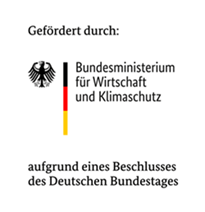
News
Project ModuLA: Information from planning to operation | 06.02.2019
Linking all the Information from the planning and operation phases requires a continous and consistent information model for the entire life cycle. Project ModuLA started end of 2018 to work out the specifications for this integrated approach.
weiterlesen
ENPRO once more at the PAAT meeting | 10.11.2015
This year presented the initiative ENPRO a large proportion of the scientific program of the Annual Meeting of ProcessNet Section "Process, Apartus- and Plant Engineering (PAAT)" on 16 and 17 November 2015 Bruchsal. Prof. Kockmann gave on Tuesday, 11/17/2015, an overview of the ENPRO idea and subsequently showed the individual projects their current results.
weiterlesen
1st ENPRO day was a great success | 29.06.2015
On the 24.06.2015, over 50 experts from the ENPRO initiative met at DECHEMA in Frankfurt am Main, Germany, to discuss the latest results. A World Café was held during this meeting, debating the current developments and developing ideas for the further progress.
weiterlesen
Modular Equipment for Energy Efficient Production
In the project “Modular Equipment for Energy Efficient Chemical Production” modular equipment shall be utilized to reduce project lead times and at the same time improve energy efficiency in chemical industry. The key aim of the project is to demonstrate that a module based approach enables the reuse of equipment blocks already designed in previous projects. A module based planning approach will be developed that aims at selecting and configuring the most suitable equipment from a database rather than individually designing it. In close collaboration between companies from chemical industry, engineering companies, software manufacturer, equipment manufacturer and academia the required modular equipment will be designed. Module versatility will be achieved by defining the main equipment item as the core of the module which will be accompanied by a variety of additional functions. An example for a main equipment item may be a special type of pump while the piping required for rinsing the pump may represent the configurable additional function. To make these equipment modules applicable for chemical plant design an engineering tool will be developed that evaluates the equipment’s function in the process and its energy efficiency. It will thus help choosing the most suitable and most efficient main equipment item in the first step. In subsequent steps additional functions will be added. The designed modular equipment will be used in one engineering tool for the whole planning process from basic to detail engineering.
The approach will physically be demonstrated on a variety of pumps with different active principles. A monitoring system will be developed that allows for observing the dynamics of the pump´s state of operation. The system will be designed generically for any type of pump. An innovative damper system will be developed that guarantees pulsation free operation also for displacement pumps. Finally a set of pumps will be designed that have economical connection dimensions independent of the pumps active principle only defined by the volume flow transported by the pump. All this together will allow for a quick selection of the most energy efficient pump and will additionally enable exchanging pumps against more efficient models.
Project Start 1st September 2014
Run time 36 Months
